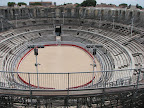Okay, I am a big fan of his work..... are not we all.
Here are seven strategies to be more like Leonardo.
* Curiosity An insatiably curious approach to life.
* Demonstration: A commitment to test knowledge through experience.
* Sensation: The continual refinement of the senses, especially sight, as the means to clarify experience.
* Sfumato: A willingness to embrace ambiguity, paradox, and uncertainty.
* Art|Science: The development of the balance between science and art, logic and imagination ("whole-brain thinking").
* Cultureç The cultivation of ambidexterity, fitness, and poise.
* Correctedness: A recognition and appreciation for the connectedness of all things and phenomena; "systems thinking."


